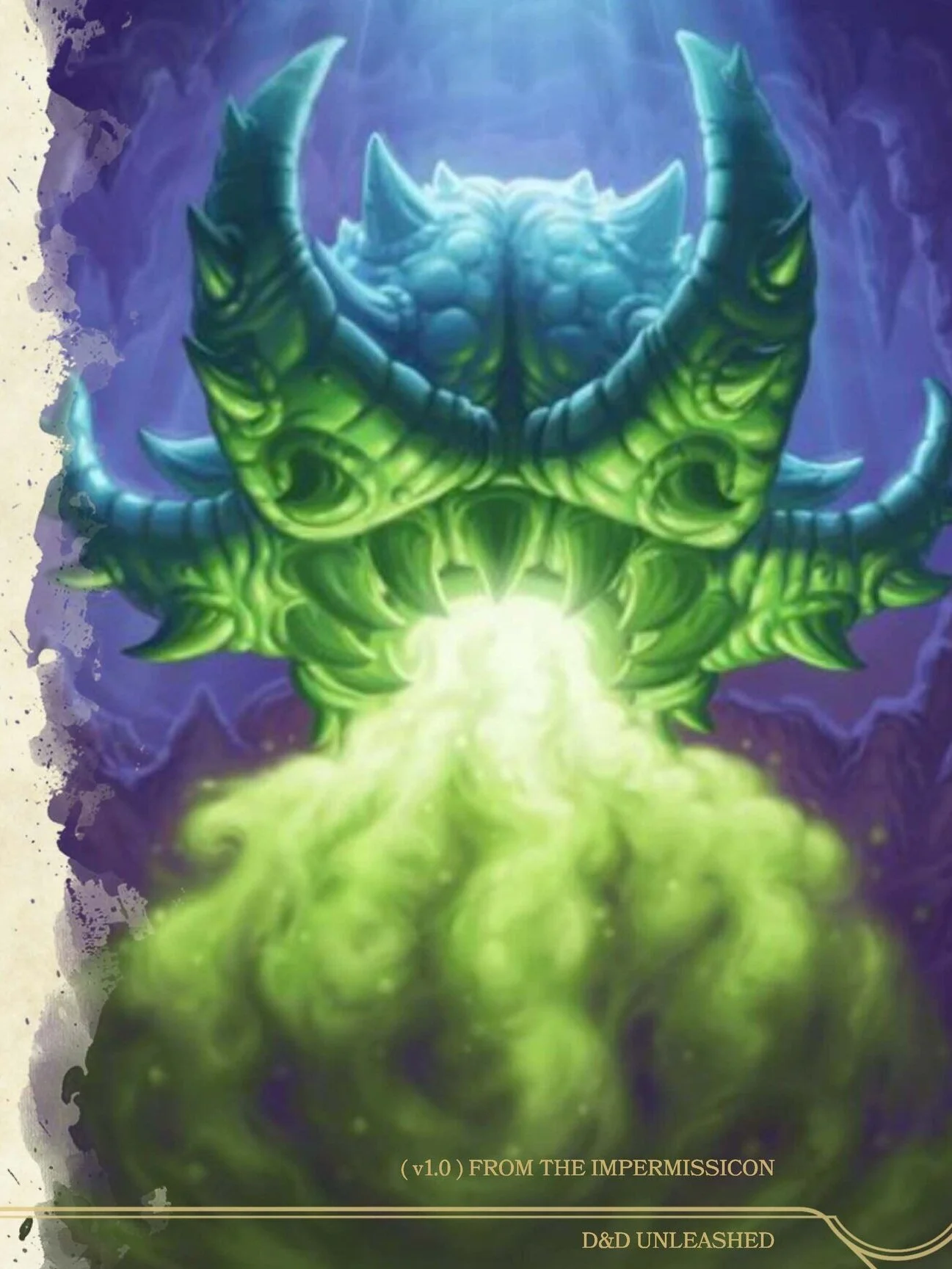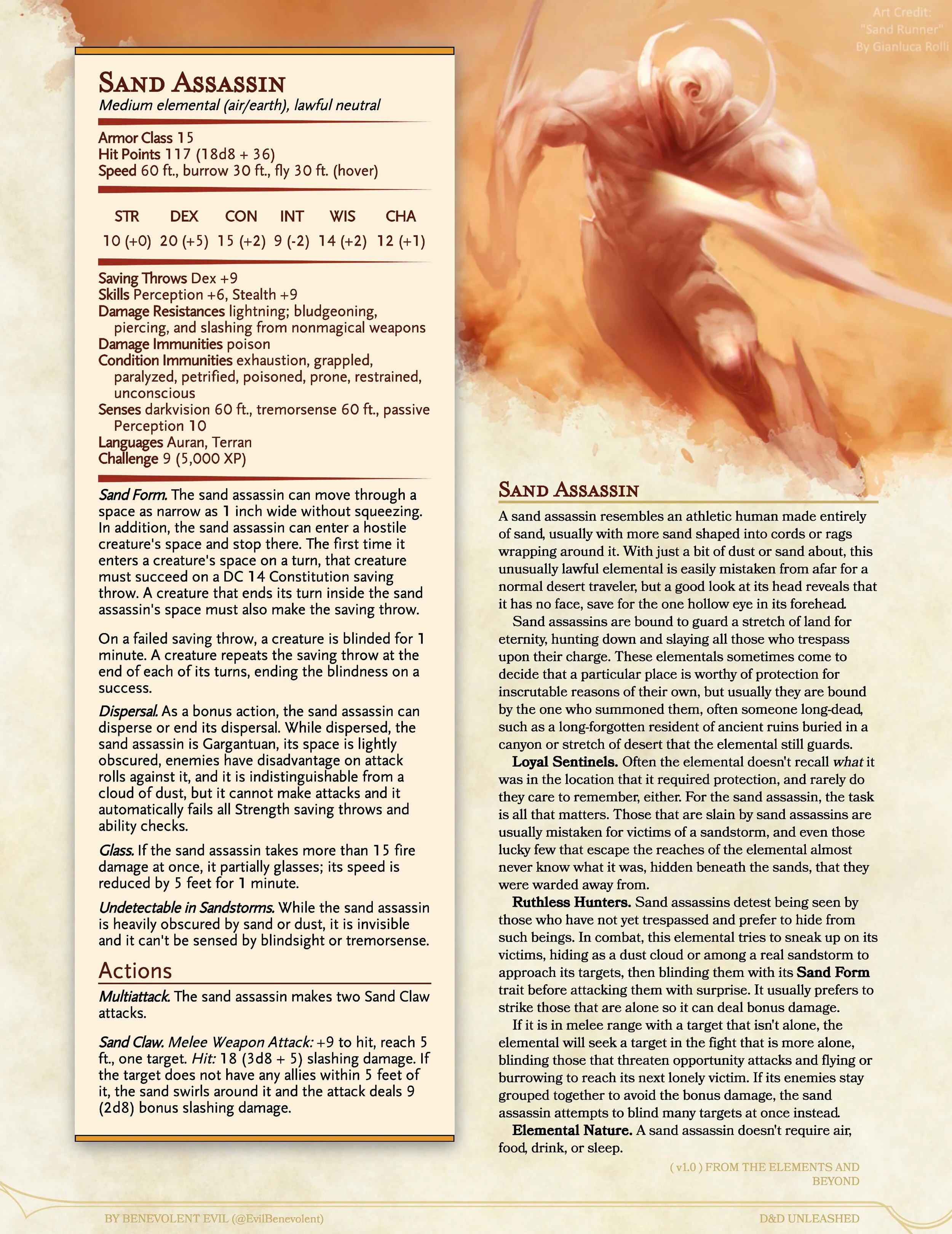New Spells: Minor Poison Magic
This content can also be found at its most updated version in The Elements and Beyond, a free 246-page compendium that you can download right here, filled with 23 subclasses, 8 spellcasting feats, 134 spells, 213 spell variants, 85 monsters, 30 magic items, 4 races plus 12 new subraces each with racial feats, and even more goodies for both players and DMs!
“You think his breath smells bad now? You have no idea. Wait until we get into a fight.”
Art Credit: https://hearthstone.gamepedia.com/Deadly_Spore
Poison damage is, by far, the most underpowered damage type available to spellcasters in 5th edition D&D. Not only does it have few official spells to support it, but poison damage itself is very commonly a poor option against many monsters. There are more monsters that are completely immune to poison damage and the poisoned condition than there are monsters who are immune or resistant to fire damage combined, and that’s despite fire damage being the second-most commonly resisted damage type by a long-shot. Cold damage, for example, has only 29 creatures that are immune (and just over 100 that are resistant), but poison damage has an incredible nearly 200 monsters that are entirely immune!
Because of this, poison spells need to provide a great deal of utility and do a reasonable amount of damage just to be competitive with other spells of the same level. Ideally there should even be some poison spells that are strong enough to incentivize players to want to specialize in poison damage, the same way that spells like fireball or lightning bolt give players reasons to specialize in fire or lightning damage. And since poison damage is one of the five damage types available to Dragon Sorcerers, its especially strange when it feels like a completely nonviable choice — a “trap” option.
The new poison spells available in D&D Unleashed help alleviate these issues by combining potent effects with meaningful damage to make poison damage a more appealing option. The first spell we’re previewing today, Toxic Breath, is designed to be a competitive alternative to fireball and lightning bolt at 3rd-level. Like those two spells, it deals 8d6 damage in an area, but unlike those spells it carries the additional downsides of being very close-ranged, a smaller area, and of course using the definitively weakest damage type. Because of these downsides, though, toxic breath has room to apply a temporary debuff to its targets without becoming too powerful compared to other 3rd-level spells. Thus, choosing toxic breath over fireball gives you the advantage of being able to deal area damage and debuff your foes, but it does so at the cost of being harder to use in many different ways: it’s harder to fit many enemies into the area, the damage is more commonly negated, and the debuff is one that nearly 200 monsters are completely immune to.
The second spell we’re previewing today is a weapon empowering spell in the same vein as holy weapon, magic weapon, or elemental weapon. Envenomed Weapon is a magical way to apply poison to a weapon — the poison magically lasts not for only one attack, but for as many strikes as the weapon can perform within the duration itself. This spell deals slightly more damage than holy weapon does, but it requires a failed Constitution saving throw in order to deal any damage at all, in addition to requiring that the wielder hit with their attacks. Because of this, and because the damage type it uses is the weakest damage type (as opposed to holy weapon’s radiant damage, which is arguably the strongest damage type. Nearly zero monsters resist it, none have immunity, and many monsters have vulnerability or special weaknesses to radiant damage), this spell can deal more damage than a 4th-level weapon buffing spell might normally be allowed to without breaking game balance.
As a side-note, weapon buffing spells, like all buff spells, are something that we favor in D&D Unleashed. Our design philosophy for buff spells is that they typically allow for both the spellcaster and the buffed target to feel extra powerful and cool, instead of just the spellcaster. This becomes especially meaningful at higher levels. When a group has spellcasters that can cast 7th, 8th, or even 9th-level spells, those who have weaker magic (or especially none at all) can often feel outshined, but if the powerful spells help show off the martial prowess of those characters, no one is left asking “why did I level this class all the way instead of a wizard or cleric?”
Links: PDF | D&D Beyond: Envenomed Weapon, Toxic Breath









